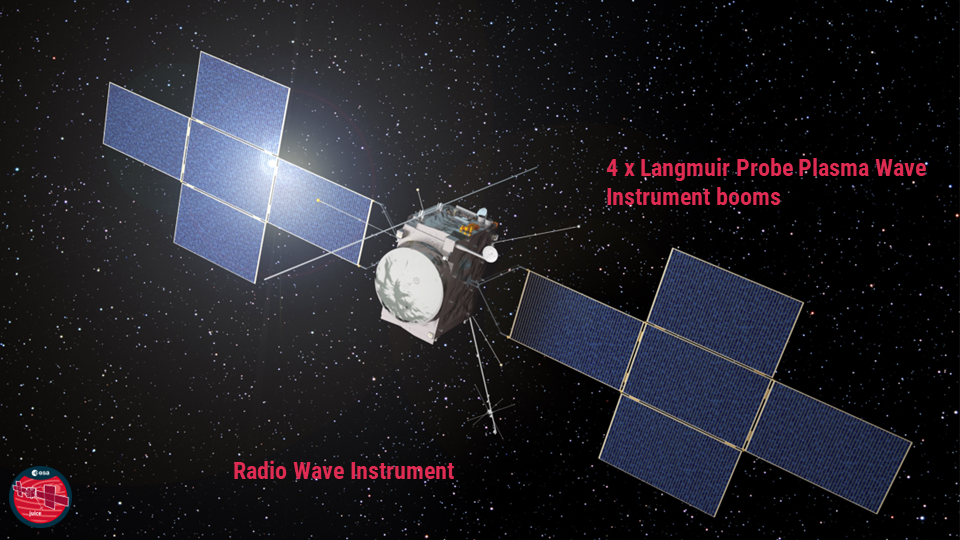
Four LP-PWI Langmuir probes are to be mounted on the JUICE spacecraft in order to gather crucial information about the surrounding bulk plasma in Jupiter’s magnetosphere.
The main goal of the mechanism is to position the Langmuir Probes at the desired angle of 135º and 3 m from the spacecraft. To achieve this, the LP-PWI unit consists of two CFRP links joint with hinges and driven by clock springs.
The major design challenges are the large scale of the system, the extreme ranges of temperatures in a space environment (below -200 degC near Jupiter to above 200 degC during Venus flyby), the dynamic deployment principle due to the light-weight design requirement (<1.4kg per unit), and its low natural frequencies.
Despite these challenges, the design went through a successful development campaign, including deployment tests in simulated zero-gravity conditions, as well as vibration and thermal-vacuum tests. All LP-PWIs were integrated on the spacecraft, and as of 2022 they await mission launch in 2023.
The prime contractor under ESA contract is the Italian company Leonardo. Astronika as a direct Leonardo subcontractor is responsible for the design, development and testing campaign of two hold-down and release mechanisms:
- External Hold Down Mechanism (EHDM) – composed of two units (Upper and Lower EHDM) will hold the ProSEED Drill Box and release it upon receiving the activation signal. The current configuration introduces two HDRM tensioning devices based on the Frangibolt actuator application. Both upper and lower fixing points provide necessary tensioning.
- Internal Hold Down Mechanism (IHDM) – will provide support to ProSEED Drill Rod and Translation Screw when stowed in launch conditions. After the spacecraft landing lock shall be released and the mechanism shall clear the path inside the Drill Structure in order to allow the Mandrel to move for the drilling operations.
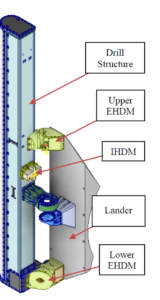

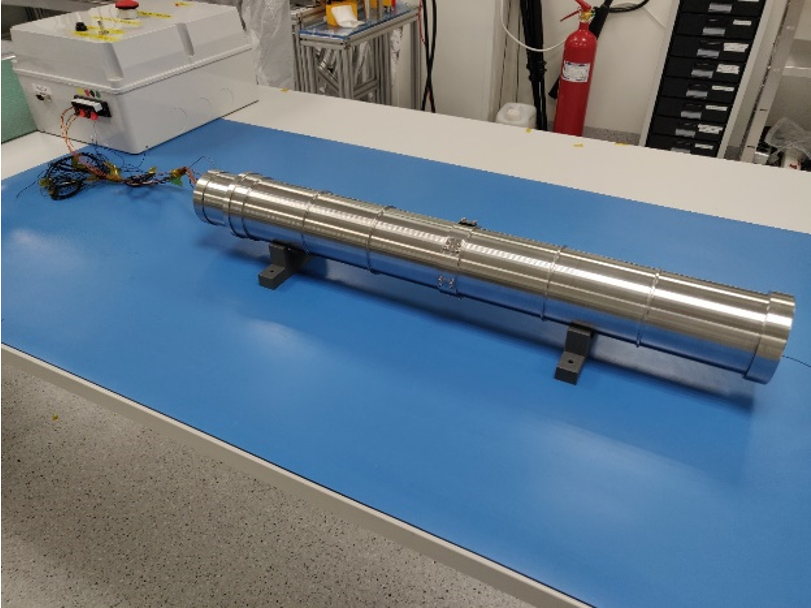

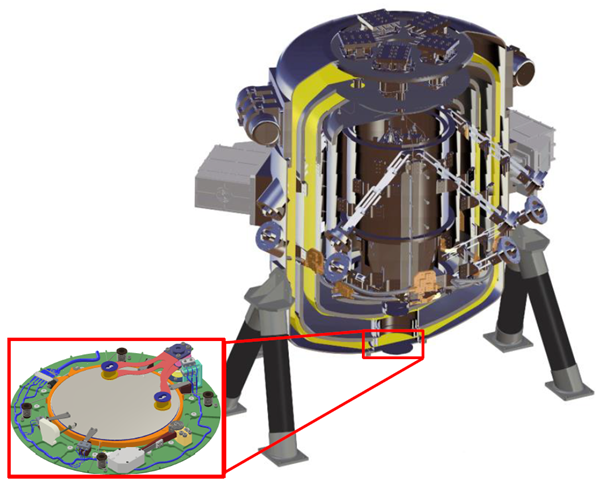
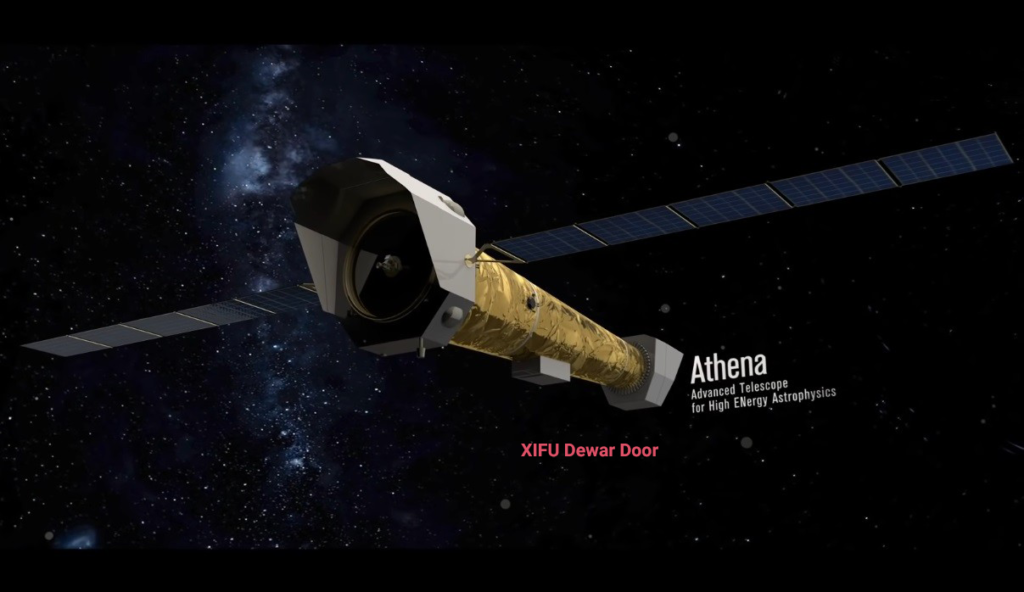
The spacecraft will have two instruments onboard: XIFU (spectrometer) and WFI (imager), sharing one focal point of the X-ray telescope.
Instrument Selection Mechanism will be required to perform placing each of these instruments at a telescope focus when a measurement is to be conducted.
Architecture study for the ISM led to the solution of the mirror steered by a hexapod system with six linear actuators. Astronika is responsible for the development of these mechanisms in a co-engineering fashion together with Airbus DS Friedrichshafen.
The linear actuator will also comprise two ball-joints placed on its ends: of them provides three rotational degrees of freedom, while the second has one DOF constrained, resulting in available two. Its main features are high structural carrying ability (few kilonewtons) while preserving low preload and smooth work during in-orbit operations, so necessary to assure compliance to micron range accuracy requirements.
Astronika is also working on the Dewar Door for the ‘X-Ray Integrated Field Unit’ for ATHENA – an X-ray telescope designed to observe the “Hot and Energetic Universe” facilitating our understanding of how ordinary matter assembles into the large-scale structures we see today, as well as how black holes grow and shape the Universe.
The main objective of the Dewar Door designed by Astronika is to maintain vacuum inside the Dewar container carrying one of the two instruments onboard ATHENA – the X-IFU cryogenic X-Ray spectrometer. The Door will need to allow for direct calibration of the sensors inside the Dewar without the necessity of unsealing the whole system. Once ATHENA is in orbit, the Door will open and allow X-IFU to realize its full spectroscopic potential. The Door is also required to enable some measurements to be taken while still closed, which means it will need to allow for rays of a designated energy spectrum to pass through.
The main features of the DD design are baseplate interface and vacuum-tight cover equipped with special windows, which need to be both transparent to X-Rays and durable enough to withstand any forces acting on the Door during launch or operation. Due to volume constrains, is it crucial that the Door opens on a plane parallel to the surface of the aperture to be sealed – this requires the use of a novel solution, which can later be replicated for the purposes of various other space missions. The Door will be locked into position with the use of a polymer thread which will be melted to release the mechanism and uncover the scientific instruments. Throughout this project, Astronika is continuously expanding its competences in constructing and verifying vacuum-tight covers for vessels carrying unique contents. These covers are reliable, ultra-light, consume little power and generate low shocks. The development also involves the use of specialized radiolucent materials.
During the first phase of the project, Astronika prepared a BB model of the Door, and the mechanism was checked for overall functionality in laboratory conditions. In the second phase, the design was adjusted and improved, and the necessary simulations and analyses were performed. The updated DM model will soon be integrated and thoroughly tested, and this phase is expected to end in 2022.


